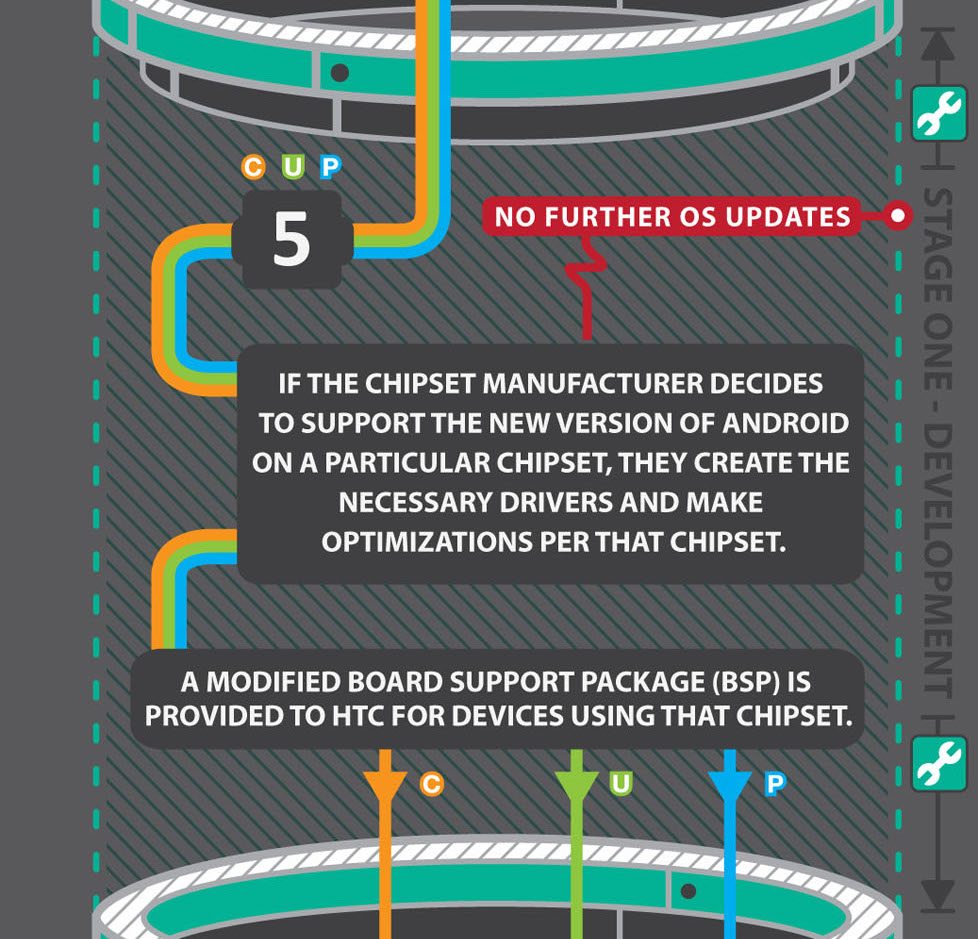If you are wondering whether you will ever be able to upgrade your smartphone to Nougat, let’s make something crystal clear – it’s very difficult if not completely impossible for any phone that uses Qualcomm’s Snapdragon 800 or 801 to get the official Nougat build. Considering that most of the smartphones today run on either Snapdragon 800 or 801, this may come as a disappointing news.
As reported by arstechnica, if your smartphone uses Snapdragon 800 or 801, sorry folks – you’re gonna have a tough time getting the official Google-sanctioned Nougat update. Wondering whom to blame? Many companies are at fault here for this mess – firstly, all phone makers for not keeping up the newer version of Android, secondly, Google for initiating the whole mess and finally, Qualcomm for failing to support older chipsets – blame who you want to!
Understanding How an Android Update is Made

The above infographic which HTC released a couple of years ago, gives a very good idea about how android updates are actually made. It’s quite evident from the pic that very early in the process, chip makers like Qualcomm and Samsung (remember the Exynos chip from Samsung?) have to decide which products they will support. Only the supported chips get tested-and-optimized drivers for GPU, modem and other parts of the SoC. The chip maker then provides the updated software to phone makers. This, along with Google Android code and apps from Qualcomm/Samsung are eventually mixed together. The whole package is then released as an update. As long as this package meets google’s compatibility requirements, it can be rolled out as an update.
The reason why you are currently facing Android update issues is that companies and carriers need to agree on developing and releasing the whole package together. What likely happens most of the times is that somewhere in the companies-carriers chain, something goes wrong and the update never gets rolled out. One of the main reasons for this mess is that Qualcomm isn’t providing support for Snapdragon 800 and 801 under Nougat.
When asked for an explanation, this is all that Qualcomm had to say –
“Qualcomm Technologies, Inc. works closely with our customers to determine the devices supported by various versions of the Android OS on our Snapdragon chipsets. The length of time a chipset is supported and the upgradable OS versions available for a particular chipset is determined in collaboration with our customers. We recommend you contact your device manufacturer or carrier for information on support for Android 7.0 Nougat.”
Looks like we are now caught in a vicious cycle – OEMs like Samsung don’t update phones – chip makers don’t support chipsets – OEMs can’t update phones, if they wish to.
Compatibility Testing
Rumors claim that the CTS for Android 7.0 Nougat requires that the devices support Vulkan graphics API. And who exactly provides this support? The support must come from companies like Qualcomm, who usually release the updates for drivers. Qualcomm’s lack of driver update kept the Snapdragon 800 and 801 meant that the two chips never supported Vulkan graphics API. We know now that this isn’t fully true – Nexus 9 doesn’t support Vulkan and yet it’s available for Nougat upgrade. Only the Adreno 400 and 500 GPU series in the Snapdragon 805 and above are capable of supporting the Vulkan graphics API. So there’s a lot of confusion about Snapdragon 800 and 801 support for Nougat. But meanwhile, we can only speculate that either Nougat has some performance requirements that Snapdragon 800 and 801 simply fail to meet or that Qualcomm’s lack of update drivers has caused failures in compatibility testing.
Blame Google, OEMs, and Chipmakers
In short, if your phone doesn’t receive the official update, blame these guys –
- OEMs for lack of support for older phones
- Google for raising Nougat performance requirements and initiating the whole update mess.
- Finally, chipmakers like Qualcomm for lack of support for chips.
If you desperately want to have the Nougat update, there are ways to get it. For example, third-party ROMs like Cyanogen will eventually release the Nougat update. But these ROMs come with security concerns. So it’s up to you to decide whether you wish to wait for the update, if there will ever be one, or install third-party ROMs.
